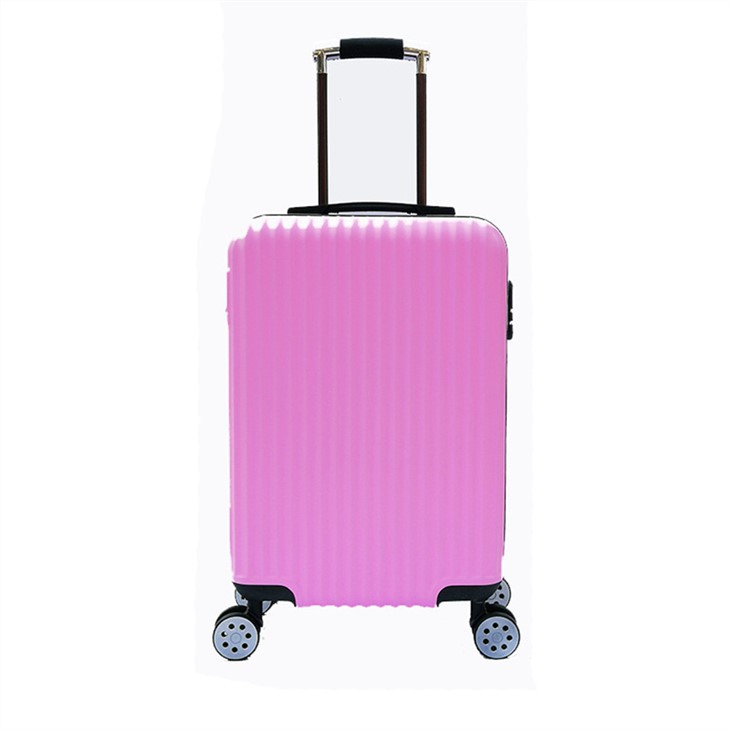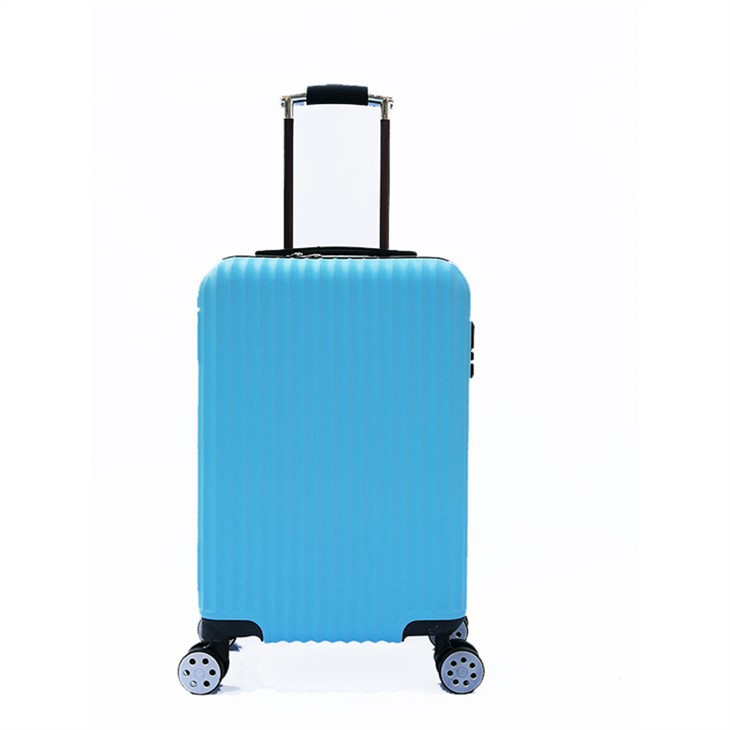Luggage refers to the bags, suitcases, or containers that are used to carry personal belongings while traveling or moving from one place to another. It may include several types of bags like rolling bags, duffle bags, backpacks, or briefcases that are designed to hold and protect items during transit. Luggage can be made of different materials such as leather, nylon, or hard-shell plastic, and can vary in size and shape to suit different travel needs.
Advantages of Luggage
Convenience
Luggage provides a convenient way to carry our belongings while traveling. It allows us to keep all our necessary items in one place and easily transport them without having to carry them individually.
Protection
Luggage is designed to protect our belongings, keeping them safe from damage or loss during transportation. The sturdy and durable material, padding, and pockets help to keep our belongings secure.
Versatility
Luggage comes in various shapes and sizes, making it suitable for different travel needs. From backpacks to suitcases, there are different types to choose from depending on the travel occasion and personal preference.
Organization
Luggage provides a way to keep our belongings organized and easily accessible. Multiple compartments, pockets, and dividers allow us to separate and organize our items based on category or usage.
Mobility
Luggage often comes with wheels, which makes it easy to move around, especially if it is heavy. This means that we don't have to carry the luggage around, and it is a lot easier to transport from one place to another.
Time-saving
Having luggage that is suitable for the trip saves time in packing and unpacking, as everything can be organized and stored in one place. This is especially helpful for those who travel frequently or have tight schedules.
-
24 Inch Front Cover Opening Trolley Case
This is a front open cover business trolley case, and also a 24 inch password suitcase.You will
Add to Inquiry -
ABS is the material of the current mainstream luggage, which is very popular in the market. There
Add to Inquiry -
PC hard luggage has outstanding advantages compared with other luggages. There are mainly three
Add to Inquiry -
Travel Luggage with 360°Wheels
People like to bring a luggage with 360°Wheels when travel.According to the conservative statistics
Add to Inquiry -
Lightweight Cabin Trolley is perfect for overnight business trips.People can go boarding with this
Add to Inquiry -
There are some details about the soft side luggage.The soft side spinner luggage maximizes your
Add to Inquiry -
Nylon Soft Luggage with Fine Appearance
Nylon soft luggage with fine appearance is popular with many people. Because they have a lot of
Add to Inquiry
Why Choose Us
High quality
We take pride in the craftsmanship of our products and ensure that each one meets our strict standards for quality.
Professional team
The members of the team are highly skilled and proficient in their respective roles and possess the necessary education, training, and experience to excel in their jobs.
Good service
Customer service will update you the logistics information of the goods in time to ensure that the goods are delivered in time.
After-sales service
Our factory has more than 10 years of working experience researching and selling. All after-sale requests will be responded in 24 hours.
Types of Luggage
Suitcases
Suitcases are the most commonly used type of luggage. They come in a variety of sizes and materials and are ideal for longer trips or when carrying more significant items. Suitcases have wheels and a handle, making them easy to transport.
Backpacks
Backpacks are a popular choice for those who prefer to travel lighter. They are perfect for carrying small to medium-sized items and are comfortable to carry around. Backpacks are ideal for adventure trips and travel on foot.
Duffel bags
Duffel bags are great for packing sports gear or clothing. They are usually made of soft materials and are easy to pack and carry. Duffel bags come in various sizes and colors, making them a versatile option for travelers.
Garment bags
Garment bags are designed to keep clothes neat and wrinkle-free. They are ideal for business travelers or those attending formal events. Garment bags come in various sizes and materials and are perfect for transporting suits, dresses, and other formal attire.
Wheeled totes
Wheeled totes are a hybrid between a suitcase and a tote bag. They are perfect for business travelers who need to carry their work essentials and a change of clothes. Wheeled totes have wheels and a retractable handle and usually have several compartments for organization.
Travel backpacks
Travel backpacks are specifically designed for backpackers or those who prefer to travel light. They are usually made of lightweight materials and have several compartments for organization. Some travel backpacks come with built-in rain covers and other features to protect your belongings.
Air travel
Luggage is most commonly used during air travel as it is the easiest and safest way to transport personal belongings. The size, weight, and number of luggage pieces allowed by airlines may vary, depending on the airline and the type of ticket purchased.
Road travel
Luggage is also an essential accessory during road travel, whether it is by car, bus, or train. It is used to carry personal belongings, including clothes, shoes, toiletries, and other essentials.
Business travel
Business travelers use luggage to carry their work essentials, including laptops, files, folders, and documents. Luggage with compartments and pockets specially designed for storing business-related items is available to meet their needs.
Adventure travel
For adventurous travelers who engage in activities such as hiking, camping, and trekking, lightweight, durable, and waterproof luggage is recommended. These bags are made of tough materials such as nylon and polyester and have compartments for storing camping gear, food, water, and other essentials.
Sports travel
Sports enthusiasts who travel to participate in sports tournaments and events use specialized luggage designed for carrying sports equipment such as golf clubs, tennis rackets, skis, and snowboards.
Components of Luggage
Exterior shell
Luggage comes with an outer shell that protects your belongings from damage. The shell can be made of various materials like hard plastic, leather, or fabric.
Zippers/ locks
Luggage usually comes with zippers or locks to secure your belongings. Locks are especially important if you are traveling with valuables.
Handles
Every piece of luggage must have handles for easy carrying. Handles can be made of plastic, metal, or leather, and they are usually located on the top and side of the luggage.
Wheels
Wheels are a vital component of luggage as they make it much easier to move around. Most luggage comes with two or four wheels for easy maneuverability.
Lining
The interior of the luggage should be lined, so your belongings do not get damaged or scratched. High-quality lining material is usually made of polyester or nylon.
Compartments
To keep your belongings organized, luggage usually comes with different compartments. The main compartment is usually the largest, while smaller compartments can be used for toiletries, electronics, or shoes.
Straps
Straps are used to hold your belongings in place and prevent them from shifting during travel. Adjustable straps can be used to secure larger items like blankets or jackets.
Tags
Luggage tags are important if your luggage gets lost or misplaced. It is important to fill out your name, address, and phone number on the tag.

Material of Luggage
Leather
Leather is one of the most popular materials used for making bags due to its durability, strength and classic appearance. It is often used to make high-end handbags, briefcases, wallets and backpacks.
Cotton
Cotton is a versatile and lightweight fabric that is commonly used to make textile bags such as tote bags, grocery bags and drawstring bags. It can be dyed in a wide range of colors and patterns to suit various styles and designs.
Nylon
Nylon is a synthetic fabric that is lightweight, water-resistant and highly durable. It is commonly used to make backpacks, sports bags, travel bags and luggage due to its toughness and ability to withstand wear and tear.
Canvas
Canvas is a heavy-duty textile fabric that is commonly used to make backpacks, messenger bags, duffel bags and military-style bags. It is strong, durable and resistant to water and dirt, making it a popular choice for outdoor and rugged use.
Polyester
Polyester is a synthetic fabric that is commonly used to make lightweight and affordable bags such as tote bags, messenger bags, gym bags and drawstring bags. It is easy to care for and can be made in a variety of vivid colors and designs.
PVC
PVC (Polyvinyl Chloride) is a type of plastic material that is used to make waterproof bags such as beach bags, pool bags and shower bags. It is lightweight, affordable and easy to clean.
Jute
Jute is a natural and eco-friendly fiber that is commonly used to make reusable shopping bags, wine bags and tote bags. It is biodegradable, sustainable and has a rustic appearance.
How to Maintain Luggage
Do not drag your luggage upstairs or over rough surfaces
Dragging your baggage upstairs or over rough surfaces can cause damage to your luggage wheels, which can be expensive to repair or replace.
Protect your luggage from harsh weather conditions
If your luggage is made of leather or other sensitive materials, it is essential to protect it from harsh weather conditions such as rain or extreme heat. Use a luggage cover or a waterproof bag to protect your luggage from damage.

Avoid overpacking
Overpacking your luggage can cause damage to zippers and other hardware. It is best to pack only what you need to avoid unnecessary weight and pressure on your luggage.
Clean your luggage regularly
Dust and dirt can accumulate on your luggage, so it's essential to clean it regularly. Wipe off any dirt with a damp cloth and mild soap solution. Avoid using harsh chemicals that may damage the material.
Store luggage properly
When not in use, store your luggage in a cool and dry place. Avoid storing your luggage in damp areas as this can cause mold or mildew to grow on the material.
Repair damages immediately
If your luggage gets damaged, repair it immediately to prevent further damage. Small damages such as broken zippers can lead to more significant problems if not addressed promptly.
What Are the Important Features to Consider When Buying a Luggage
Size and capacity
The size and capacity of the bag should match your needs. If you are buying a bag for travel, it should be spacious enough to hold all your essentials including clothes and shoes. On the other hand, a smaller bag is suitable for everyday use.
Material
Different bags are made from various materials like leather, canvas, nylon, and polyester. The material of the bag is crucial as it determines its durability, weight, and price.
Style and design
The style of the bag is another feature that you need to consider. Different bag styles include backpacks, messenger bags, totes, and duffle bags. Choose a bag that suits your style and preference.
Comfort
If you are buying a bag that you'll be carrying around for extended periods, comfort is key. Make sure the bag has padded straps or handles to provide comfort while carrying.
Storage compartments
A good bag should have enough compartments to help you organize your items. This feature is particularly crucial when purchasing a travel bag.
Durability
You want to invest in a bag that will last you for a long time. Therefore, it's vital to ensure that the bag is made of quality material and has sturdy zippers and handles.
Price
Finally, consider your budget. Bags come at different price points, so choose one that is within your financial capability and still meets all your needs.
How Much Weight Can I Carry in My Luggage
When it comes to the weight limit for luggage, it largely depends on the airline you are travelling with, as the weight restrictions may vary. To ensure that you don't face any last-minute surprises, it's always best to check the baggage allowance policy of your chosen airline before you start packing.Typically, most airlines allow passengers to carry a maximum of two pieces of luggage (excluding hand luggage) on-board, with a weight restriction of around 23 kilograms (50 pounds) per bag. However, some airlines may have different baggage allowance policies for check-in luggage, so it's important to check with your airline.
How Do I Clean My Luggage
Empty the luggage
Before cleaning your luggage, make sure to remove all items from inside. This will allow you to clean every nook and cranny without missing any hidden spots.
Remove any debris
Shake out your luggage to remove any loose dirt or debris. Use a soft-bristled brush or a vacuum cleaner to remove any stubborn dirt or pet hair.
Wipe down the exterior
Use a soft, damp cloth or sponge to wipe down the exterior of your luggage. You can use mild soap if needed, but be sure to rinse thoroughly to avoid leaving any soap residue. Avoid using harsh chemicals or abrasive cleaners that could damage the material or finish.
Clean the zippers
Zippers on luggage can easily get stuck due to dirt, debris, or rust. Use a toothbrush and a small amount of soap to clean the zippers. Be sure to dry them fully after cleaning to prevent rust.
Sanitize the interior
The interior of luggage can harbor germs and bacteria. Use a disinfectant spray or wipes to sanitize and wipe down the lining and pockets of your luggage.
Let it dry
After cleaning, let your luggage dry completely before storing it. Avoid exposing it to direct sunlight or heat sources that could warp or damage the material.
Our company has been through professional quality system certification, CE certification, SGS audit, TUV audit, BSCI audit and as a socially responsible manufacturer, we also have stable and long-term cooperation with manufacturers of renewable fabrics.

certificate

FAQ
Q: What is luggage and why do I need it?
Q: What’s the difference between a suitcase and a backpack?
Q: What are the different types of luggage available?
Q: What size suitcase should I get?
Q: Can I check my luggage on a plane?
Q: How much does it cost to check luggage on a plane?
Q: How do I make sure my luggage is not lost or stolen?
Q: What are TSA-approved locks?
Q: Is it safe to put valuables in my checked luggage?
Q: Can I bring multiple suitcases on a plane?
Q: What’s the difference between hard shell and soft shell luggage?
Q: How much weight can I put in my suitcase?
Q: What are packing cubes and how do I use them?
Q: Can I bring a carry-on and a personal item on a plane?
Q: What size is a typical carry-on bag?
Q: Can I bring liquids in my checked luggage?
Q: What items are not allowed in checked luggage?
Q: Is it better to buy luggage in-store or online?
Q: How do I clean my luggage?
Q: How do I store my luggage when not in use?







